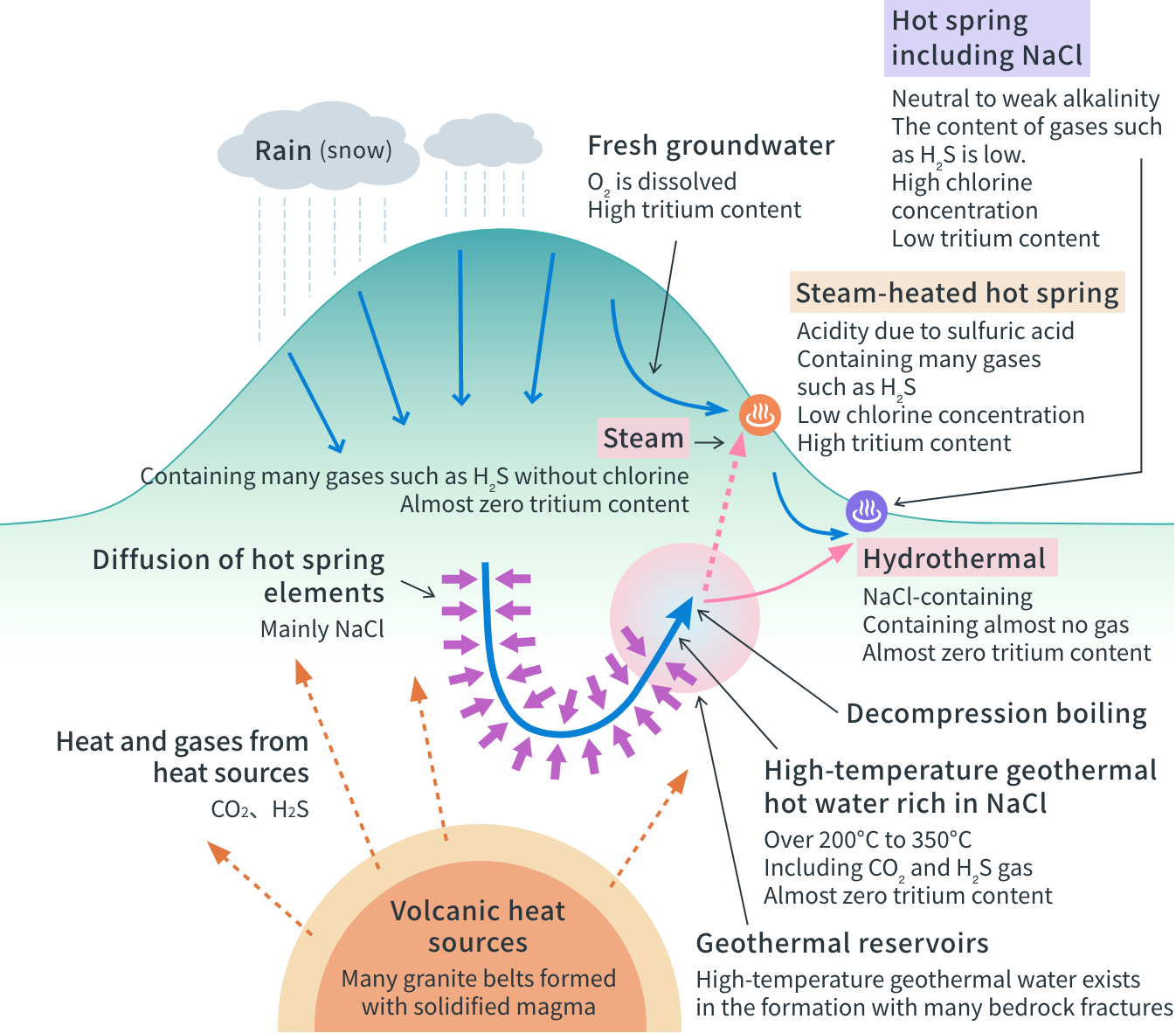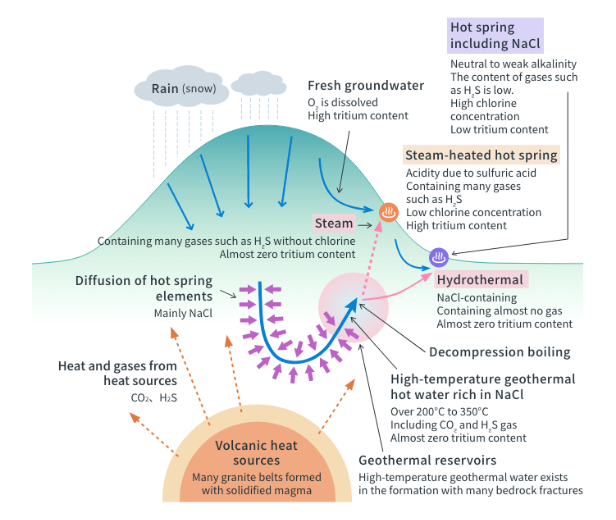Geothermal power generation

As a pioneer in geothermal development in Japan, JMC succeeded in Japan’s first commercial-scale geothermal power generation in 1966 and has since been engaged in the research and development of many geothermal, hot spring, and heat utilization projects in Japan and overseas.
Utilizing our extensive experience and accumulated advanced technological capabilities, we provide comprehensive research on the generation and utilization of geothermal power, including planning and management services for various projects and a wide range of other services.
First geothermal power generation in Japan

Matsukawa Production Well No. 1 began operations. The first production well in Japan, which successfully began operations in 1964. It was confirmed that the steam alone was capable of generating 6,000 kW of electricity, providing an impetus for geothermal development in Japan.
Four points of JMC geothermal group
-
- 1
- Technological expertise accumulated since the success of Japan’s first commercial-scale geothermal power generation (1966)
-
- 2
- Experience in research and development of geothermal power, hot spring, heat utilization, etc. in Japan and overseas
-
- 3
- Advanced R&D based on relevant technologies
-
- 4
- Providing high-quality project planning and management services based on the experience of management of projects and R&D
What is geothermal energy?
Schematic diagram of a common volcanic high-temperature geothermal area

Schematic diagram of a common volcanic high-temperature geothermal area
Geothermal energy is a clean, purely domestic local energy source with very low CO2 emissions. This section explains the relationship between geothermal resources used for geothermal power generation, volcanoes, and rainwater.
Rain, snow, and other natural water that fall on the mountains and seep deep underground are heated by volcanic heat sources, resulting in geothermal hot water with temperatures ranging from 200°C to 350°C, which gains buoyancy and rises from the deep underground. During this process, the surrounding rocks dissolve various chemical components such as NaCl, which is the source of the chemical composition of volcanic hot springs.
Boiling occurs when geothermal hot water rises up to shallow depths. When the steam from boiling water rises to the surface, sulfuric acidic hot springs with a sulfuric odor are formed. Most hot springs located at high elevations in volcanoes are of this type.
The hot spring water rises further after separating the steam and springs up on the surface, forming a NaCl-containing hot spring. Most hot springs that spring up at the bottom of valleys around volcanoes are of this type.
The transition from natural water to geothermal hot water to hot springs to the surface of the earth is a cycle that can last for tens of thousands of years.
There are places where hot water with a temperature of 200°C to 350°C accumulates in cracks in the bedrock at depths of 1,000 m to 3,000 m below the surface (in fact, it rises slowly through the cracks). This place is called a geothermal reservoir, where wells are dug to extract geothermal steam and hot water for use in power generation, heating, and other purposes.
JMC has the most extensive experience in Japan in researching the locations of geothermal resources, determining the overall structures and microstructures of geothermal hot water circulation systems, steam and hydrothermal development through well drilling, design and construction of power and heat utilization facilities, operation & management, and obtaining related permits and approvals in order to serve everyone.
For inquiries about geothermal power generation
Energy Division Geothermal Group
Products and services related to energy



